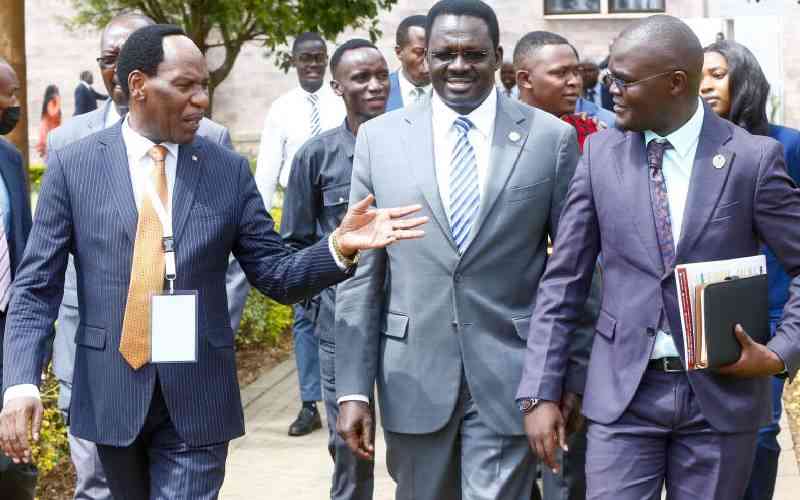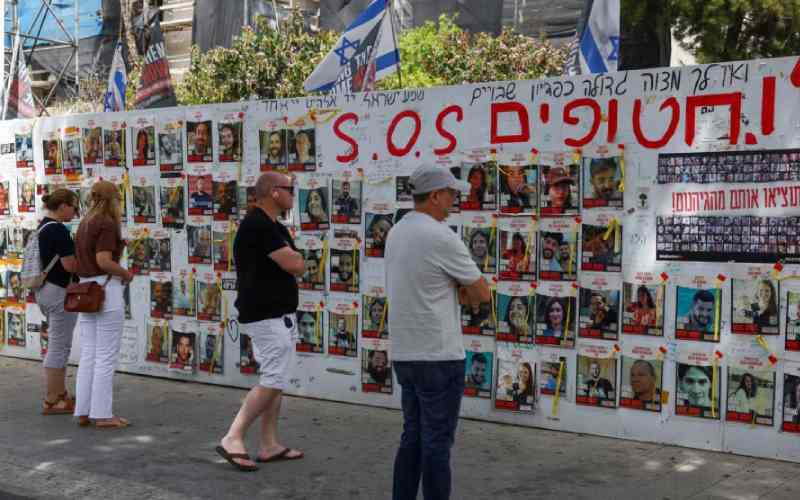Social media is abuzz about the 106 tonnes of ivory that will go up in flames tomorrow in a carefully orchestrated fire set for the Nairobi National Park. This will be the fourth ivory burn to be held in Kenya and it will occur "in protest at the continued slaughter of the country's most iconic species," according to the Director General of the Kenya Wildlife Service, Kitili Mbathai.
Social media has been cited for bringing down Chase Bank recently and for inciting the so-called Arab Spring. It will invariably help spread information about the landmark ivory burn, but what power does it have to change human behaviour and ensure the survival of various endangered species?
To address these questions, I conducted an analysis of the upcoming Giants Club Summit and ivory burn in the global online space.
My monitoring programme captured 34,783 posts made from April 11-25, 2016. At least 96 per cent of the conversation happened on Twitter, with the remainder occurring on Facebook, Instagram, blogs and websites, including those of news organizations. The posts reached an estimated 34 million readers and the official campaign hashtag, #WorthMoreAlive, was used in almost 32,313 posts.
The US Embassy in Kenya clearly recognises the power of social media and it held an online conversation to "promote and set the stage for the Giants Club Summit and ivory burn". This was done together with the Government of Kenya, the KWS, numerous conservation organizations, the donor community, as well as traditional and social media outlets.
The hashtag #LightAFire advertised the event held on April 23 and its usage exploded. It was used 7,857 times last Saturday alone. The overall online volume peaked at 15,930 posts that day, which was almost half of the volume observed during the entire study period. To put it another way, online volumes on April 23 jumped more than four fold compared to the previous day.
The #LightAFire event was an indisputable success, yet online volumes decreased quickly the following day to only 3,355 posts. And there are other interesting observations, too. Closer inspection of the geo-tagging data reveals a fairly narrow distribution of the online conversation.
Around 42 per cent of posts originated in Kenya, 9 per cent in the United States, 5 per cent in the United Kingdom, and 31 per cent of posts unfortunately were not geo-tagged.
Only 1,212 posts, or 3 per cent of the online conversation, took place across the rest of Africa, even though many countries could learn from the great strides Kenya has made in curbing its poaching problem. Furthermore, only 97 posts originated from China, Hong Kong or Vietnam, which are all major importers of ivory.
Unfortunately, 80 per cent of the 34,783 posts did not constitute original content and instead were re-posts that happened at the click of a button. Although re-posts increase the potential for readers to come across the Giants Club Summit and ivory burn, they do not indicate a deep discussion on a critical topic.
In fact, only a handful of key influencers located in Kenya, such as the US Embassy, Paula Kahumbu, KWS, Wildlife Direct and the African Wildlife Foundation, drove the discussion on Twitter through their frequent outreach and ability to reach large audiences. Two influential TV presenters in Kenya augmented these five influencers.
Lastly, the hashtag #GiantsClub was used only 415 times and it did not feature much as a keyword. The inaugural Giants Club Summit that precedes the more spectacular destruction of tusks is arguably the more important of the two events. President Uhuru Kenyatta will join several heads of state, leaders in business, conservation and philanthropy, as well as celebrities to discuss the multi-national poaching problem.
It is hoped that the star assembly will galvanise support around the globe for ending the abominable poaching that threatens to decimate the world's largest land mammal within a generation. But the online talk has not focused on the agreements that could change the conservation landscape, the types of front line protection projects that are needed, or the resources needed to protect Africa's wildlife.
There will definitely be another Twitter spike this weekend and the publicity is a good thing for conservation. However, the social media analysis has revealed some important lessons. First, online campaigns must be sustainable and they require enormous effort to make a difference. Rarely can they stand on their own and typically they are complementary to events in the offline world.
Hence they must be part of a broader engagement strategy. Second, the online space is exceptionally well-suited to increase transparency and accountability.
Stay informed. Subscribe to our newsletter
If improvements in the offline and online world do not happen, then elephants and other endangered species roaming the wild will soon be relegated to the storybooks of our children.
 The Standard Group Plc is a
multi-media organization with investments in media platforms spanning newspaper
print operations, television, radio broadcasting, digital and online services. The
Standard Group is recognized as a leading multi-media house in Kenya with a key
influence in matters of national and international interest.
The Standard Group Plc is a
multi-media organization with investments in media platforms spanning newspaper
print operations, television, radio broadcasting, digital and online services. The
Standard Group is recognized as a leading multi-media house in Kenya with a key
influence in matters of national and international interest.
 The Standard Group Plc is a
multi-media organization with investments in media platforms spanning newspaper
print operations, television, radio broadcasting, digital and online services. The
Standard Group is recognized as a leading multi-media house in Kenya with a key
influence in matters of national and international interest.
The Standard Group Plc is a
multi-media organization with investments in media platforms spanning newspaper
print operations, television, radio broadcasting, digital and online services. The
Standard Group is recognized as a leading multi-media house in Kenya with a key
influence in matters of national and international interest.








